Koudelka, The Best (Lost) Survival Horror RPG
A classic RPG with a different intent than its contemporaries
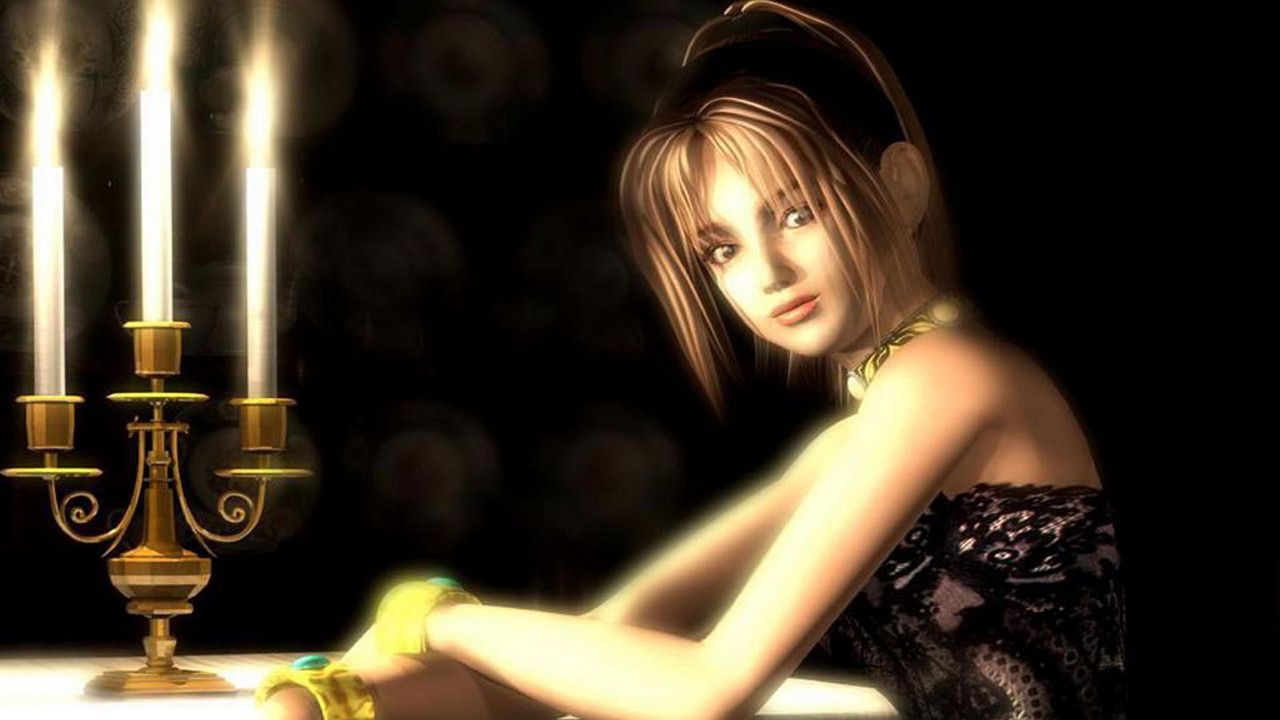
"The Believer is happy; the Doubter is wise." —Edgar Allen Poe
At some point in 1997/1998, Hiroki Kikuta and his team were standing in the Welsh countryside of Pembrokeshire, taken with inspiration. As they studied church architecture and poured over the region's uniquely Gothic scenery, they were ensorcelled by the rugged cliffs, religious atmosphere, and melancholy weather. Freshly departed from SquareSoft, this team was Sacnoth, an internal development studio at SNK. Together they set out with an ambition that would result in their ultimate dissolution—but also in the creation of Koudelka.
A Different Kind of RPG
While development would eventually become snagged by disagreements, Hiroki Kikuta was driven by his desire to make a modern RPG that was not inspired by Final Fantasy but instead bore the soul of survival horror. Ensconced in the rich tapestry of 1800s Gothic aesthetic and influenced by H.P. Lovecraft and Edgar Allen Poe, Koudelka would be something different at the tail-end of the 20th century, a PlayStation RPG as innovative as it was dark and foreboding.
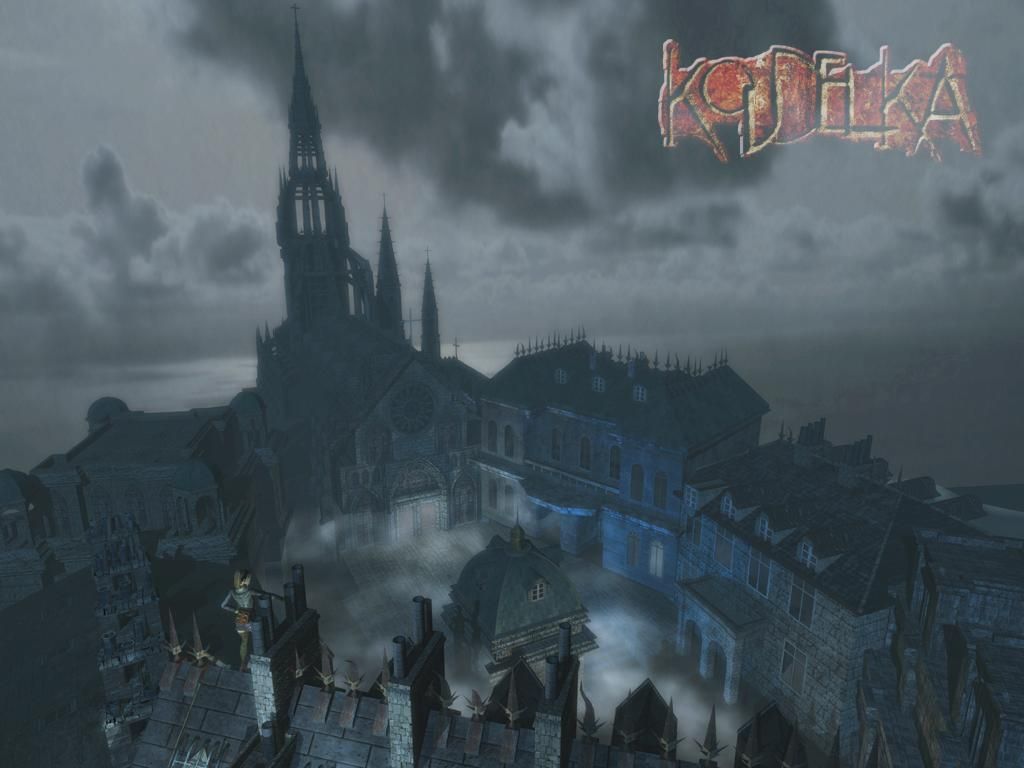
As the celebrated composer for games such as Secret of Mana and Trials of Mana, Kikuta established Sacnoth with a unique perspective. After his time at SquareSoft, Hiroki Kikuta wished to move in a different direction and explore the greater possibilities of what could be accomplished within the confines of the genre. Kikuta saw the current trajectory of the RPG as something more juvenile and wanted to create a modern game with more adult themes.
I told him [chairman of SNK] about many pitfalls that every existing RPG had. I thought those were lacking a comprehensive insight and a integrative interpretation. It is a structural defect of game production. To resolve the problem, it is necessary to get the picture of each element of game creation at the same time. I have an ability to do that. — Hiroki Kikuta
Both composer and director, Kikuta wished to create a game that evoked its themes in a way that synchronized its disparate elements. Wearing the hats of concept designer, game planner, scenario writer, producer, and composer, Kikuta was integral to the development of Koudelka, and devoted himself to the project obsessively. The team's field trip to Wales in order to scope out the realism of their set was only part of Kikuta's driven development; he claims to have read over 100 books on British history during his time at Sacnoth, all to improve the game's sense of time, place, and atmosphere.
In order to capture Koudelka's uniquely realistic presentation of 19th-century Neo-Gothic classicism, Kikuta explored the period's profane obsession with Christian and occult supernatural elements.
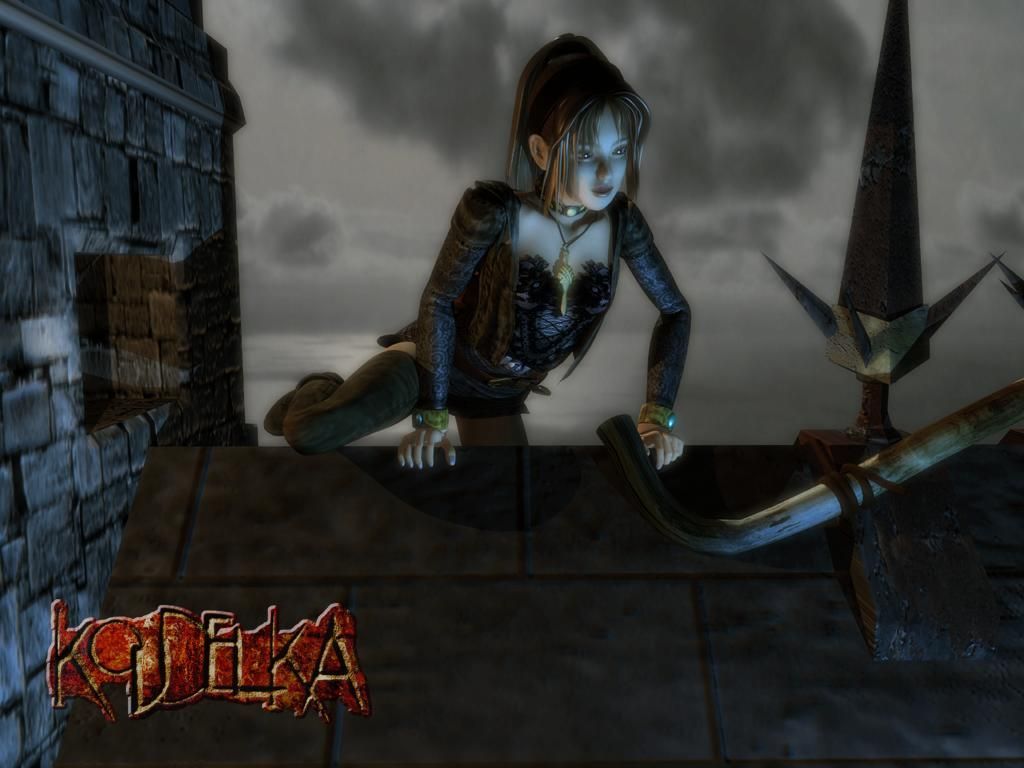
History With a Darker Twist
Koudelka's central and atmospheric location of the Nemeton Monastery in Aberystwyth, Wales, was chiefly inspired by the development team's trip through St. David's Cathedral in the community of St. Davids near the River Alun. The cathedral's complex architecture, numerous rooms, and oppressively decorative religiosity helped them design the gorgeously pre-rendered rooms and backgrounds of Nemeton, where the entirety of Koudelka unfolds in a single night. Haunted, chilling, and deceptive, Nemeton Monastery is as much a character in Koudelka as it is a central location, a bedraggled piece of Renaissance history whose elements are both cosmic and horrific.
By fixating on this atmosphere, Koudelka is able to achieve its status as a particular type of RPG that waxed around the turn of the century and has not often been emulated, even in indie circles. This sort of atmospheric RPG that relies heavily on a single setting impresses upon the player a sense of urgency, but also inflicts a sort of claustrophobia that acts as a piece of the worldbuilding. Vagrant Story, released only a month earlier in North America in 2000, feels like a cousin to Koudelka, both in terms of story and design. Breath of Fire: Dragon Quarter, Parasite Eve, and even Bloodborne achieve this sense of heightened claustrophobia by pressing the player into a corralled setting only to slowly widen the lens when it serves the plot. Koudelka, by taking place over the span of one night and locked primarily into the environs of a mansion (and its immediate exterior properties) remains more of a bottle episode than the others.
In the late evening of the year of our Lord 1898, Koudelka—a Romani psychic and hired investigator—breaks into one of the upper windows of the Nemeton monetary in Aberystwyth, Wales. Spurred by reasons not yet known to the player, Koudelka engages in combat with a horrific monstrosity before meeting Edward Plunkett, a disparaging but violently capable young man who is also in the monastery for his own business. After speaking with the monastery's seemingly benevolent caretakers, Edward is poisoned in a milquetoast attempt to do away with any thieves that might be staking their fortune in the artifacts of God that lay scattered about the ancient manse. After recovering from the poison and meeting up with a particularly prickly priest named James O'Flaherty, the trio sets out upon the rest of the evening and into the morning, where there is no end to the grotesqueries.
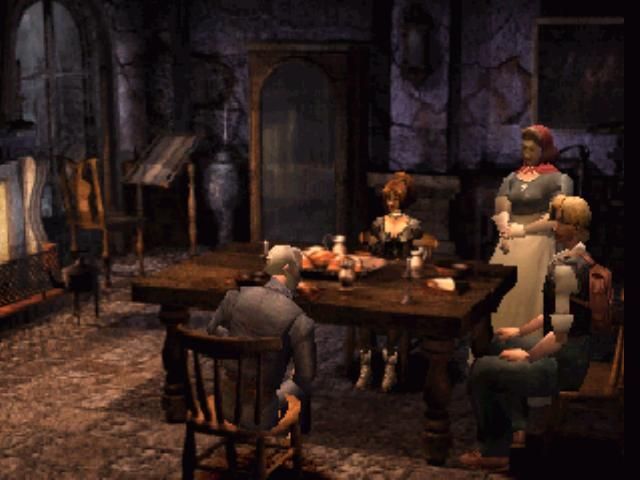
Gameplay in Koudelka happens on a grid, with simplistic turn-based combat that allows the player to move and take action for each of the three permanent party members. While there are no classes in the traditional sense, leveling up provides a certain degree of endless customization, where the player can choose which stats to put points in and which to ignore. This allows the player to decide how the three party members should behave, such as arming Edward in the traditional role of the tank and granting him swords and daggers, while putting skill points into James's magic and having him stick to the back row. The grid itself is only large enough to offer minimal strategic placement during battle, with characters naturally taking forward and aft positions. Magic also levels up with frequent use, as do weapons, and it serves to have each character stick with a particular weapon type for as long as possible.
Weapons, while plentiful, have a hidden durability stat, and can break during battle from frequent use. Koudelka also relies upon its survival horror trappings by allowing the player only minimal item space (for weapons and curatives combined), and so a clever player will steer each party member toward a particular path. While some weapons can have surprising effects such as restoring MP upon strikes instead of dealing damage, there are few moments throughout the game's short run time that the player should ever panic for not having enough weaponry by which to deal damage and defeat foes. Firearms, for instance, require bullets, but bullets are fairly plentiful both as a pick-up item and a reward after fights.
Combat is both turn-based and random, and is where Koudelka's primary RPG flavors come in. While the development team and Hiroki Kikuta argued over what exactly the combat should entail, they agreed to steer away from the more traditional Resident Evil-style third-person gunplay in favor of a combat style that would better serve the story and setting. Kikuta, who was more focused on the narrative and the music, allowed the rest of the development team to create the combat that made it into the final version of the game. While this argument served as a sore spot during Sacnoth's creation of Koudelka, the gameplay works quite well in conjunction with Koudelka's more atmospheric elements. Fights are not lengthy, and the turn-based grid combat allows the player to really observe the grotesque and imaginative design of Nemeton's twisted denizens. While criticized at its release for having a more simplistic gameplay element, Koudelka's easy-to-understand strategic combat makes room for the weight of the story.
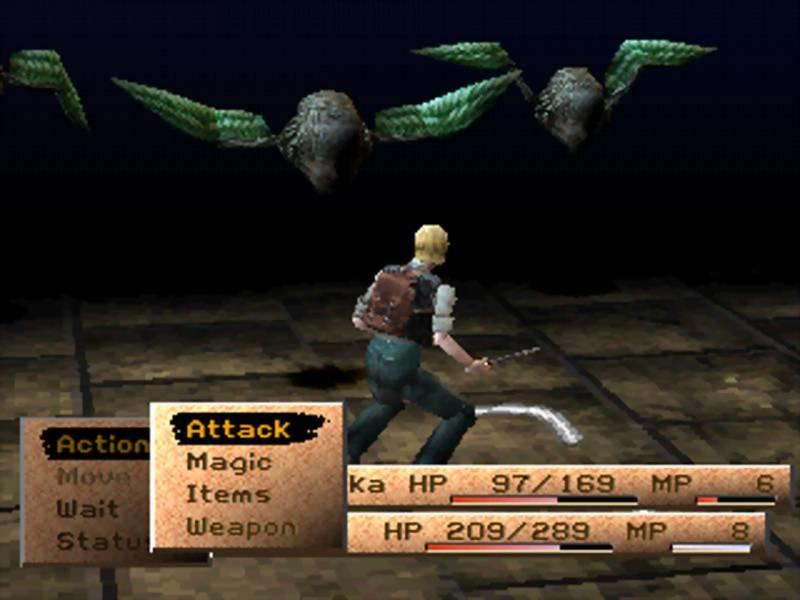
The Weight of Vision
"Let me begin by saying, whenever you divide up responsibilities among a group of people concerning the judgments that get made on a project, the end quality is bound to suffer as a result. To keep the quality high and the schedule organized on a project, it's better for as few people as possible to be making key decisions, and for them to be communicating within the group with as few conflicts as possible. The ideal situation would be for but one director to be delegated the responsibility of expressing his or her creative vision. That said, for Koudelka, I was pursuing that degree of creative control." —Hiroki Kikuta
The spirit of Koudelka shines through the presentation of Kikuta's initial philosophy for the game—to make an RPG that didn't rely on the more juvenile conventions of the era and adhered rigidly to a specific place and time. Through its gorgeous and detailed pre-rendered backgrounds, surprisingly animated character sprites, robust voice acting, and situational music and sound, Koudelka feels incredibly faithful to the intentions of its design, the team's disagreements notwithstanding. While it was not commercially or critically successful, Koudelka is the sort of late-console PlayStation game that pushes the properties of the system to its very limit, an interactive piece of art that is decidedly its own celebratory work.
Influences in Koudelka abound, from its Christian and occult trappings to its snappy and savage female protagonist. Sacnoth used photography as the primary inspiration for the game's art—the characters infamously were picked from over 100 individual sketches created by character artist Yūji Iwahara, who would go on to illustrate the manga King of Thorn and Darker than Black. Photography was not only paramount to the game's characters and location—Koudelka herself was named after Czech-French street photographer Josef Koudelka, who spent years photographing the nomadic lifestyles of the Romani peoples in Romania, Hungary, France, and Spain. Josef Koudelka has enjoyed many lifetime awards for his unique ability to capture the human spirit among dark landscapes and dismal times, no doubt another component in Kikuta's titling of both game and character.
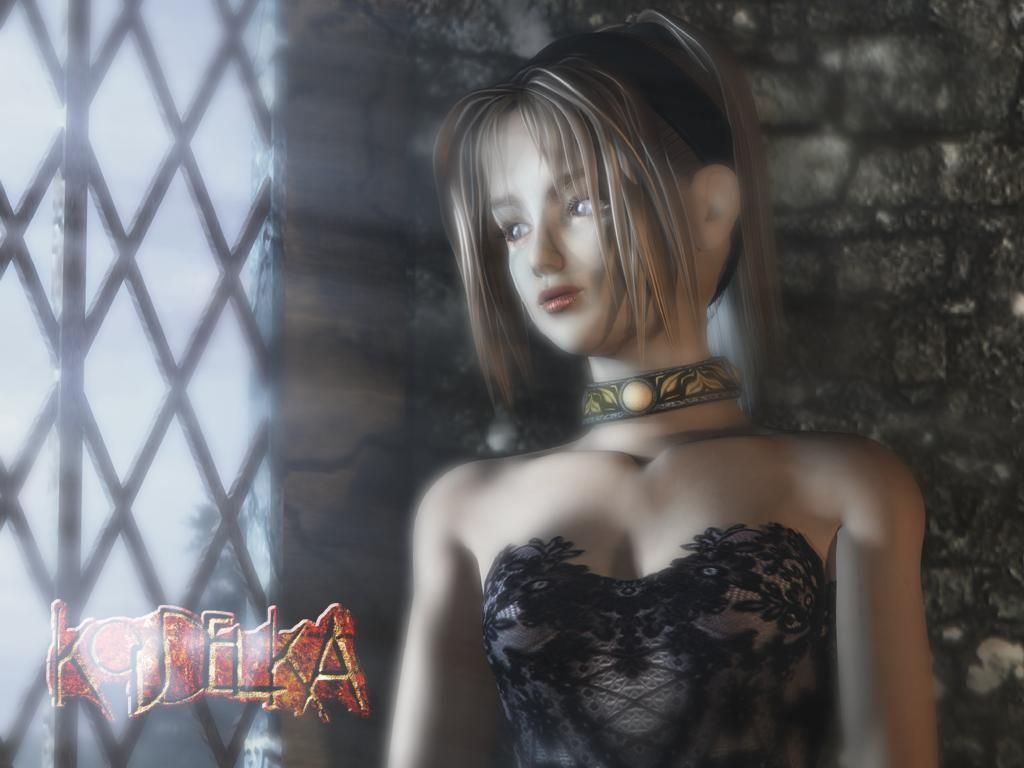
Kikuta and Sacnoth's desire to blend realism with fantasy culminated in Koudelka's dark, oppressive, and haunting atmosphere. By placing the game firmly at the turn of the 19th century, Sacnoth was able to create a game focused on the cusp of technological advances and old-world superstition. While not fully fleshed out in Koudelka's short playtime, Kikuta had hoped to more fully explore the schism of magic and science, especially during the trappings of the industrial era. By blending real-world events with fiction, such as the sinking of the Princess Alice, he was able to impose upon the player a sense of stark reality amidst the fantastical. Kikuta's research time, which was roughly three months of personal study and assembly, culminated in a number of additional influences such as the works of H.P. Lovecraft, Umberto Eco, and Lord Dunsany, as well as the adventures of Carnacki, the Ghost-Finder. The character of Koudelka, fully assembled, generated not only additional (retconned) manga stories, but unrealized sequels canceled due to the game's lack of success.
By the way, what I am particular about at the stage of assembling the story is not to bend the historical facts. Various incidents that have been recorded as having actually happened, I love the way they relate to each other and fill in the gaps with fiction. —Hiroki Kikuta
An Adherence to Quality
Most impressive is Koudelka's voice acting. In terms of both delivery and presentation, the game's voice acting stands head and shoulders above its turn-of-the-century PlayStation contemporaries.
Motion capture wasn't necessarily new to the video games industry in the late 1990s—Final Fantasy VIII used it, notably, for the Waltz for the Moon dancing scene—but the technology was still nascent, and expensive, when Kikuta decided that Sacnoth should utilize it for the scenes in Koudelka. Mocap allowed both a more expensive field of movement for the scenes as well as enabling a more realistic sense of voiced dialogue from the actors. While voice acting at the time bore a range of quality (disparities such as Symphony of the Night's and Metal Gear Solid's most infamous scenes, for example), Kikuta was determined to manage an unheard-of level of technicality to make Koduelka's more Shakespearean scenes stand out among the work of his peers.
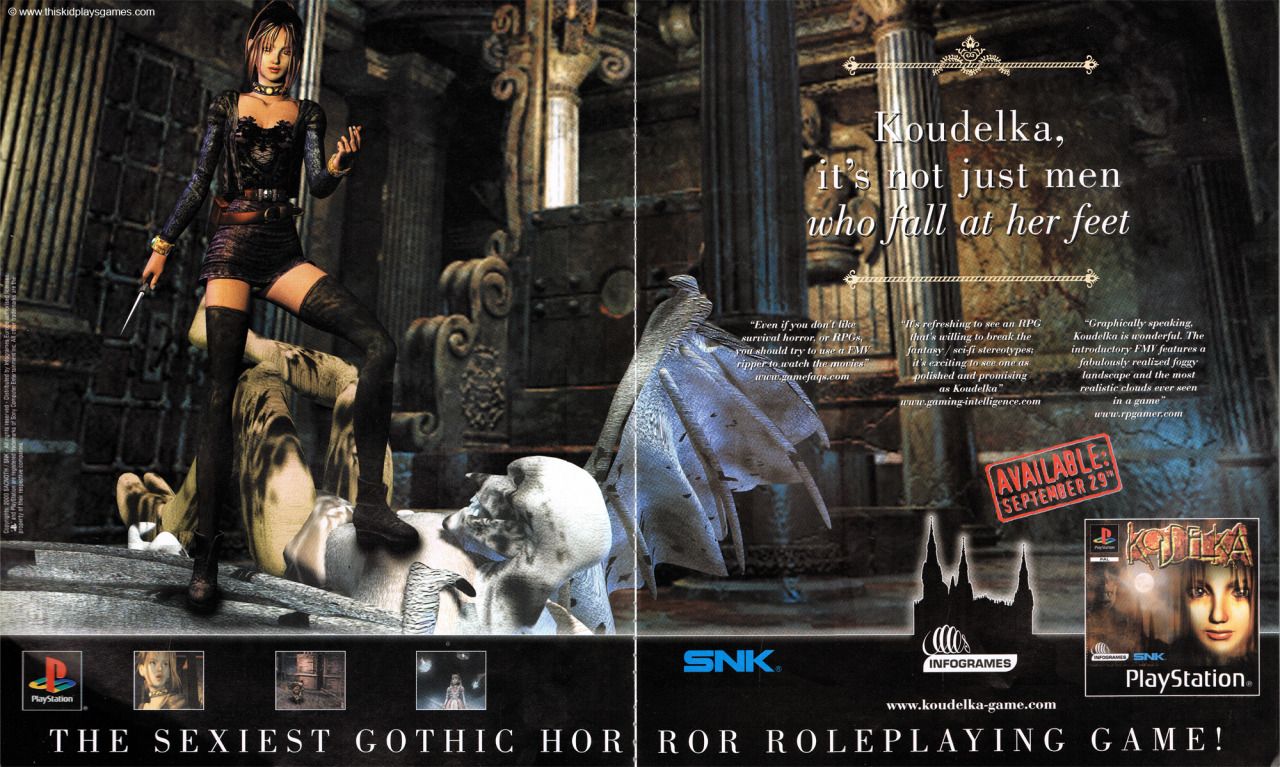
Borrowing time at Future Light SFX studios in Santa Monica, California (responsible for the effects of Godzilla 1998, Independence Day, and Star Trek's first fully-fledged CGI ship models), Sacnoth was not only able to mocap multiple actors together in a single scene, but simultaneously record the voice acting. To cut down on time and expense, Kikuta put out a casting call for local actors and chose from 100 different Californian recipients, narrowing down the 3 that would play Koudelka, Edward, and James. Designed to function like a low-budget stage play, the actors used minimalized sets and random objects as stand-ins for their cutscene interactions. Since everything was recorded in English, the NA version of Koudelka is the game in its original language, without subtitles during the scenes.
"We demanded extreme accuracy in providing the background details, and we even used motion capture technology to provide culturally appropriate body language for the characters, techniques advanced enough to compete with the standards of the Hollywood industry at that time. Those challenges, which were provided by the passion motivating that project, were the real essence of Koudelka." —Hiroki Kikuta
To say that Koudelka's general voice acting performance is impressive is an understatement, especially when compared to similar games at the time, and even into the PlayStation 2 generation. While the recordings were made on equipment that doesn't carry the clarity or technical prowess of a modern game, each character's performances are a strength that provides an iron backbone to Koudelka's atmospheric and historical plot. Vivianna Batthika, especially, grants a sharpness to Koudelka that truly centers her character against her male counterparts. Edward (Mickaël Bradberry) apparently served as a "mood lifter" on set, unsurprising considering the mirth and comedy that his character brings to the trio. James, in contrast, is the ever-judgmental and servile missionary priest whose constant interruptions in the plot measure almost antagonistically.
Koudelka, Under the Dust
No game can truly be summarized by the sum of its parts, but the examination of Koudelka's individual strengths showcases a uniquely atmospheric video game sitting at a cross-section of genres that are not utilized nearly enough in conjunction. It's surprising that over twenty years later, the "survival-horror RPG" still exists as an outlier, even in the more creatively-free landscape of indie development. What Kikuta and Sacnoth accomplished with Koudelka, despite the hiccups and lack of sales, is a video game that stands the test of time precisely because of the adherence to quality and the diversion from popularized norms.
As composer, Kikuta found the sound design by far the easiest aspect of the game's development and focused on the composition while allowing the rest of the team to construct their version of the game's battle system and other technical aspects. A soundscape of moody, atmospheric, and melancholy sounds and pieces, Koudelka's OST fits the Welsh setting, squarely placing the player in the haunted house mind-space. Kikuta worked with Nick Ingman on the opening theme, an English arranger and composer whose pedigree includes assisting Radiohead, David Bowie, and Elton John. Kikuta's obsession with French studies led him to use Ubi Caritas Et Amor as the ending theme, taken from Quatre Motets sur des thèmes grégoriens, a series of sacred motets inspired by medieval Gregorian chants. Kikuta also published a Koudelka six-part radio drama through Pony Canyon, which served as a brisk adaptation of the plot.
"At that time, I realized that it is necessary for creative work to have a degree of obsessive passion involved. I hope that some degree of that conviction had a positive result on the end product." —Hiroki Kikuta
Ultimately, Kikuta's vision would not be fully realized and Koudelka would not become as successful as intended as a foray project from an infant studio. While Kikuta planned out the bones of three Koudelka sequels, poor sales resulted in the dissolution of Sacnoth and the retreat of Kikuta. Despite this change in plans, Koudelka's setting would go on to inspire the spiritual sequel series Shadow Hearts, published by Midway, which found moderate success on the PlayStation 2 and have all become cult classics in their own right. Shadow Hearts shares a few things with Koudelka, such as settings and characters, though all were made without input from Kikuta and carry a more melodramatic, cartoonishly-inspired feel popular with other JRPGs of that era. It does make one wonder about Kikuta's appraisal of Shadow Hearts and how it simultaneously spun off into its own series while containing many of the more juvenile aspects of the RPG genre that Kikuta was purposefully trying to avoid.
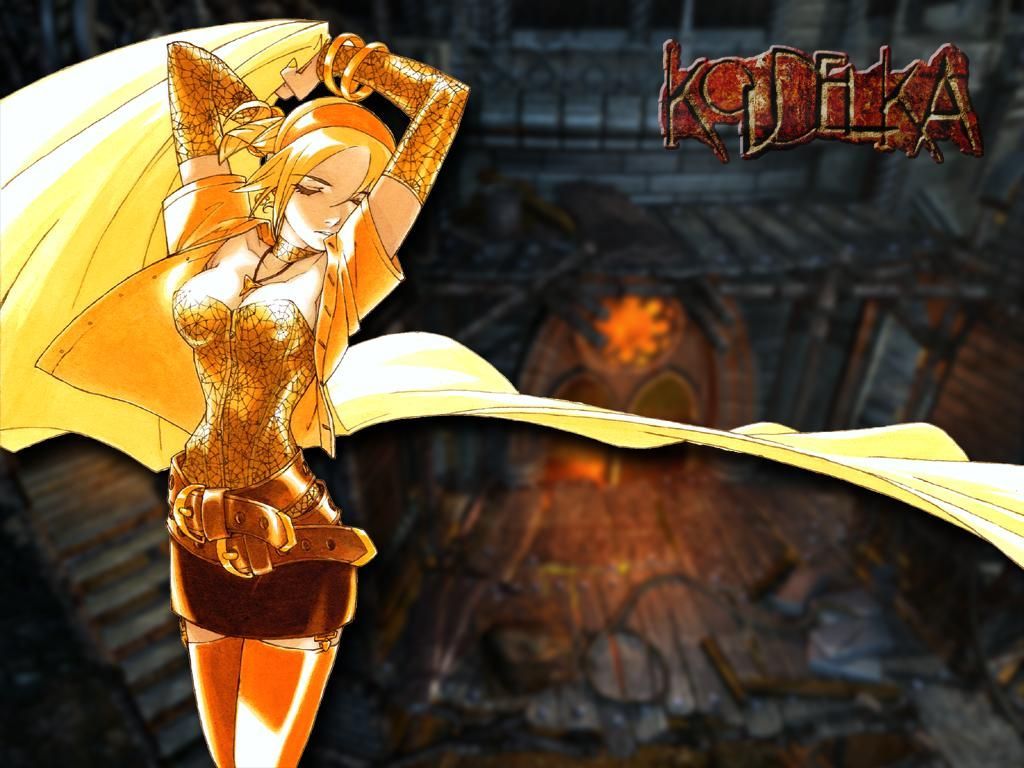
The Koudelka we have, warts and all is an impressive cross-combination of genre, style, and storytelling that inspired and overwhelmed me twenty years after release. In a similar vein to my recent obsession with Breath of Fire: Dragon Quarter twenty years after the fact, it's a shame how many video games, as titanic pieces of interactive art, have essentially become lost to the modern gamer. Koudelka unfortunately is not (currently) available on any PlayStation service, and used copies of the physical game are quite expensive. Emulation is always an option (I played Koudelka on the Steam Deck, a fantastic experience), though emulation is not accessible to everyone. Until Koudelka is made more easily accessible to the general gaming populace, it is the sort of game whose reputation has become shorted to word of mouth, YouTube videos, and essays. While functional, these do not represent what it is like to play the game yourself.
It is a synthesis of ideas, concepts, narrative, and gameplay that makes Koudelka work, designed in a time when video games had not quite adhered to the rigidity of their modern genres and design philosophies, where Sacnoth was able to swing for the fences and truly attempt something groundbreaking. For RPG fans and survival horror aficionados, Koudelka is a dream game, a vertical slice of everything good and bad that uplifts and mires these two seemingly disparate genres. The time I spent with Koudelka can only be described as joyous, as it scratched many itches at once—for anyone like me, discovering and playing Koudelka feels like coming home.
Koudelka may have never been given the critical attention it warranted, and even at the time received middling to poor reviews from IGN, GameSpot, and others, which may or may not have led to its lackluster sales. Kikuta ended up leaving Sacnoth in 1999, abandoning the company he founded and moving on to greener pastures. While the internal story of Koudelka is a sad one, it's a game that's more than deserving of your attention. I will not sully the game by using such an overwrought phrase as "it holds up," but alongside the other PlayStation RPG titans of the late 1990s, the game is more than worth your time. If your interests intersect at all within Koudelka's combination of historical set pieces, Christian occultism, narrative storytelling, and RPG mechanics, you may just have a new undiscovered favorite ahead of you.
